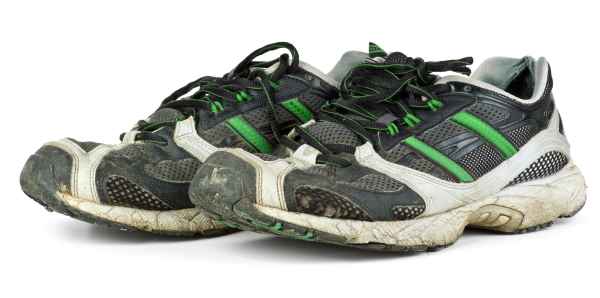Life throws us all sorts of curveballs, and the only thing that seems to be consistent about it is that curveballs are thrown to everyone, no matter who you are. For many of us, these curves can disrupt our pursuits of exercise and any other healthy practices, which can lead to cessation of activity and weight gain. If this happens to be you, you’re most certainly not alone.
Getting back into running safely and effectively after weight gain consists of regularly listening to your body, knowing how to ramp up your running activities appropriately, setting behaviour-based goals and striving for progress over perfection in order to maximize your chances of success.
If you want to know the exact details of how this this entire process needs to be addressed, I’ll be walking you through each of the critical factors, step by step, while making sure that I give you my best tips that I’ve acquired over all my years of being a strength & conditioning specialist as well as a physical therapist.
I know that you and I are just two strangers on the internet, but I really do care about you and am excited for you to get back into an activity that can provide wonderful physical and mental health benefits.
So, here’s the plan:
(Click on any of these bullied points to instantly jump to that section of the article!)
- Learn how to listen to your body
- Know what to expect along the way
- Know how to ramp it up appropriately
- Set behavior-based goals
- Strive for progress, not perfection
Disclaimer: While I am a physical therapist, I am not YOUR physical therapist. As a result, I cannot tell you whether or not any information mentioned on this website or in this article may or may not be appropriate for you, including physical activities. By following any information within this post, you are doing so at your own risk. You are advised to seek appropriate medical advice before returning to running.

Learn how to listen to your body
If you’ve had a car sitting in your garage for an extended period of time and then wanted to start driving it again, you’d be wise as you do so to pay extra attention to how the engine sounds, how the steering feels and all of the other parameters associated with the overall health and performance of the vehicle. The last thing you’d want to do is erroneously believe that you don’t need to listen or pay attention to what the car may be struggling with or may be trying to tell you.
Your body is the same way. Each and every person’s body, no matter who they are, has all sorts of various dysfunctions within it. Most of the time they’re innocuous and we’re not even aware of them. However, the more we start to challenge our body in our physical pursuits, the more we tend to bring these dysfunctions to the surface.
Don’t try to simply block these things out or blatantly “push through them”. This sort of approach tends to come back to bite people. Rather, the more you “tune into” and listen to what your body is telling you, the better you can decipher what’s going on and the quicker you can take action to alleviate and hopefully correct the issue.
Give your body the respect it deserves – when it’s got something to say, be sure to listen to it and respond accordingly.
Know what to expect along the way
The whole process of returning to running after weight gain can be a mixed bag of emotions, with highs and lows often appearing throughout the process. The extent and frequencies of said highs and lows can depend on numerous factors, including the extent of your weight gain, the extent of time off from running and other ongoing factors (physical, emotional, etc.) that may be taking place within your life.
It would be unrealistic for you to expect that your path back towards your ideal weight and running pursuits will be a completely linear one. It certainly can happen, but more often than not, it doesn’t. So, as I always say: hope for the best but prepare for the worst.
Think it not strange if extra obstacles come your way as you dive into your running pursuits once again. Rather, have a plan for how to deal with them. If you don’t plan and prepare for the punches that life can hit you with, they can catch you off guard and proverbially knock you down.
But when you have a plan for dealing with the punches, it’s much more unlikely that any of them will be a devastating blow altogether; rather, you’ll know how to respond accordingly in order to keep yourself continually moving forward and in the right direction.
What to expect and prepare for:
The following certainly isn’t an exhaustive list of things to expect and prepare for, but when it comes to those who want to get back into physical activities again (be it running or any other physical pursuits), they are the more common culprits that can derail even those with the best of intentions.
As you read through this list, ask yourself if you feel these could be likely factors you might encounter, and if so, what the best preemptive strategies for you to take would be.
Aches and pains

Aches and pains happen to everyone, whether we’re physically active or not. Being an individual who has put on some weight and likely been more inactive for a certain period of time, chances are that some aches and pains may rear their ugly heads when you first get back into things (make sure you read the next section to ensure you minimize them as much as possible.)
Related article: Faster Exercise Recovery: How to Remove Lactic Acid After a Workout
The good news is since you’ve read through the previous section on how to listen to your body, you’re less likely to experience these types of setbacks. Nonetheless, they can still occur, so when they do, you want to be ready for them.
The key with being ready for these aches and pains is to nip them in the bud so that minor issues don’t become major issues and ultimately ones that end your pursuits altogether.
Related article: The Seven Best Ways to Massage Your Calf Muscles All By Yourself
Lousy food

You can’t out-train a bad diet. Assuming you are hoping to lose some weight as you return to running, a bad diet will sabotage your pursuits in two ways:
The first is that unhealthy, highly-processed junk food is going to pack on the calories that you’re trying to burn off, making weight loss much more difficult to achieve.
The second is that lousy food will likely equate to lousy performance from your body during your physical activities, such as when running. Poor food choices may lead to lousy energy and even more ache and pains due to inflammatory responses within the body.
So, make sure you have a plan in place to deal with the temptation of lousy food.
A great starting point for this is to check out the amazing (and free) blogs that Precision Nutrition offers (located under their resources and articles section). Precision Nutrition some of the best folks in the game when it comes to creating healthy eating habits and having effective strategies in place in order to turn it into a sustainable habit.
Please note that I have an affiliation with Precision Nutrition. If you choose to make any purchases from them using the above link, I receive a commission fee (at no extra cost to you) that I use to help offset the costs of running this website.
Lack of motivation

Chances are good that some days you’ll have all the motivation in the world while other days you’ll feel like you don’t have any. Relax, this is normal. It’s totally understandable if you struggle with motivation at times throughout the process, but it’s not an excuse to not prepare for the likelihood of this occurring.
We will all be motivated in different ways and by different things. Therefore, you need to know what is going to light and continually stoke the fire inside of you to keep moving forward with your running and weight loss pursuits. Find what motivates you, write it down somewhere if need be, and pull it out and read it aloud to yourself on days where you need to rekindle the fire within you in order to keep on going.
Know how to ramp it up appropriately
Most individuals who want to get back into physical activity after having taken some time off or having put on some weight know that you can’t simply dive head-first back into your activities; trying to pick up right where you left off is a sure fire way to get injured or even burn out altogether.
Unfortunately, most of these individuals aren’t sure of what constitutes an appropriate progression for slowly working their way back up to where they want to be. Ultimately, it will depend on a number of individual factors, but what follows is a great basic approach to consider for someone who has been sedentary and away from running for an extended period of time:
Step 1: Prep your body by fast walking for the first 1-2 weeks
A good starting point is to walk as fast as you can for the first week or two. This will not only burn a ton of calories (fast walking as fast as possible can burn more calories than slow jogging, due to the body actually becoming more biomechanically efficient when we jog).
Walking for the first one or two weeks will help slowly prep your cardiovascular system, your joints, muscles and tendons for the forces and demands in the upcoming weeks as you return to running. It will also allow you to learn to tap into what your body might be telling you if there’s any aches or pains that start to pop up along the way.
After your initial 1-2 weeks of walking as quickly as you can, your body will be much more prepared for the demands of jogging/running.
Step 2: Use the 10% rule for returning to running
The 10% rule involves bumping up some sort of parameter of your running by 10% each week over a number of weeks until you’re back to where you want to be. It’s a great way to ensure that you continue to challenge yourself without doing too much too quickly.
Start by doing a very low intensity run, until you feel adequately tired/worn out, etc. Keep it slow and easy for this first run. Next, pick ONE aspect of that run and increase it by approximately 10% for the next week (examples and tables to follow below).
As an example: If you ran for 10 minutes, keep your pace the same for the next week and bump your duration up to 11 minutes (a 10% increase). If you ran at a speed of 3 miles per hour, you could try running at around 3.3 miles per hour (this is a great approach if running on a treadmill). Just increase a single parameter each week if you wish to err on the safe side.
Repeat this process for the handful of weeks it may take until you’re back up to where you want to be in terms of your running pursuits. It’s a great way to slowly increase the challenge while ensuring you don’t do too much too quickly.
Remember: Based on the extent of your weight gain and overall health, you may need to tweak the percentage a bit; the 10% rule is very generalized and it may want to increase it to an 11% or 12% rule, or perhaps even decrease it based on your needs. However, it serves as an approximate progression that is appropriate for many individuals who wish to safely progress back into their physical activities without risking overuse injuries or excessive muscle fatigue and/or soreness.
Here’s an example of what the 10% rule would look like when increasing your distance each week:
Here’s an example of what the 10% rule would look like when increasing your duration each week:
Here’s an example of what the 10% rule would look like when increasing your pace each week:
Set behavior-based goals
While you may find yourself coming up with and jotting down all sorts of outcome-based goals, such as losing X pounds of weight, being able to run for X amount of minutes or distance, there’s another type of goal that would be prudent of you to set.
Most people set these types outcome-based goals but fail to set a much more powerful type of goal: behavior-based goals.
Behavior-based goals are critical for success because a behavior-based goal is always within your control, whereas outcome-based goals aren’t necessarily. You can do all the right things in your pursuits of reaching your outcome-based goal(s) and still fall short. This can feel incredibly defeating. You worked so hard to lose 8 pounds this month but only lost 4. Ugh.
But if you set a behavior-based goal, such as “I will run three times per week for the next six weeks,” or “I will run a minimum of five miles each week over the next eight weeks”, you have an insane amount of personal control over meeting those goals.
And when you meet your behavior-based goals, it will fill you with a sense of accomplishment that is hard to rival. Trust me.
So yes, set some outcome-based goals, but make sure to set (and really focus on) your behavior-based goals as well.
Strive for progress, not perfection
We often put a lot of pressure on ourselves when trying to make a personal comeback, or when trying to author a better current chapter in the story of our personal life. The pressure is understandable since it comes from us wanting to “get it right” or “make things right” after having made mistakes we’d rather not repeat.
But sometimes we subconsciously equate this self-imposed pressure to mean that we need to get everything right and make it perfect along the way. No one gets it perfect throughout the journey.
You need to accept that you will make mistakes, that there will be ups and downs and that sometimes things just won’t go your way. Perfection within a journey such as getting back into running after gaining weight is simply an illusion. But progress isn’t.
Progress, no matter how slow it may be, is a sign that you’re making more right choices than wrong choices and taking more appropriate actions than inappropriate ones.
If you’re making progress, you’re moving in the right direction. Remember that.
As the old Chinese proverb goes: “don’t fear slow progress, fear no progress.”
So, focus on progress, not perfection.
Final thoughts:
Getting back into running after gaining weight is a process that many individuals have gone through or will go through at some point. If you’re currently looking to get back into your own running pursuits, know that many people before you have done so successfully and that you can do so as well.
Listen to your body, realize that this whole thing is a process filled with ups and downs, set behaviour-based goals, ramp things up slowly and give yourself some love along the way. If you do this, you’ll have a great starting point AND a much higher chance for success along the way as you strive to make the changes that you’re after.
-Jim

Hi! I’m Jim Wittstrom, PT, DPT, CSCS, Pn1.
I am a physical therapist who is passionate about all things pertaining to strength & conditioning, human movement, injury prevention and rehabilitation. I created StrengthResurgence.com in order to help others become stronger and healthier. I also love helping aspiring students and therapists fulfill their dreams of becoming successful in school and within their clinical PT practice. Thanks for checking out my site!

